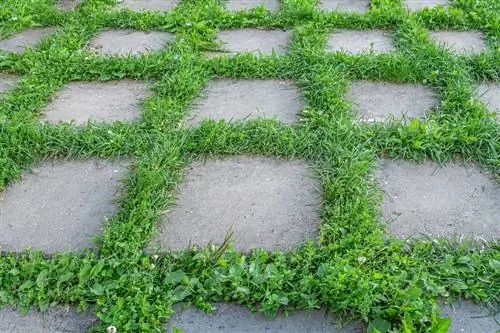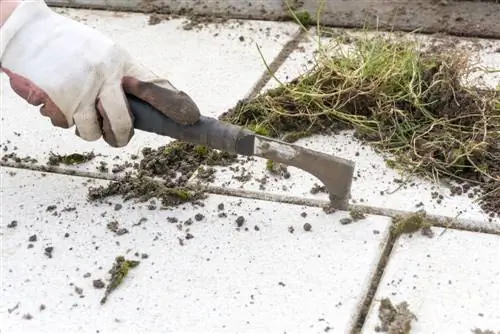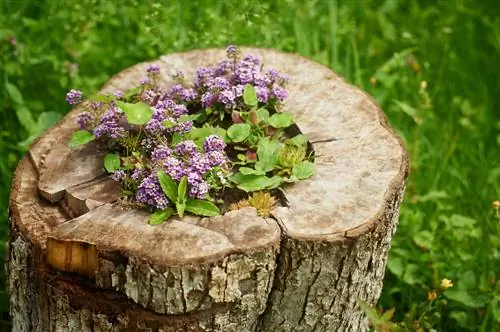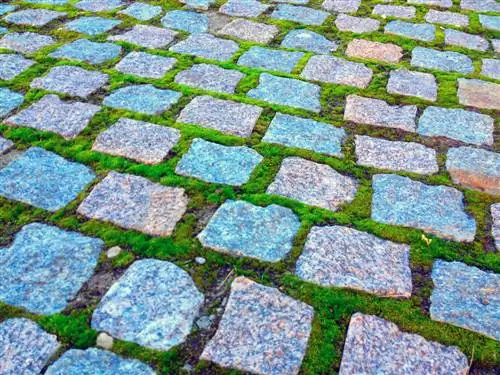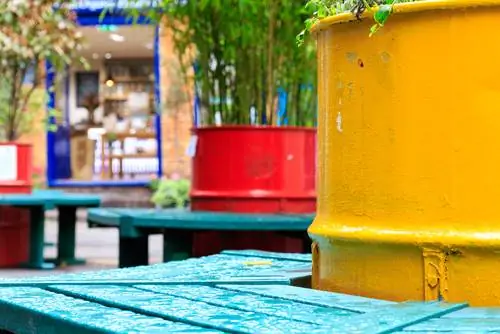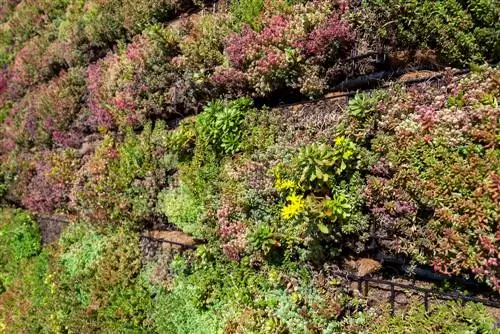- Author admin [email protected].
- Public 2023-12-16 16:46.
- Last modified 2025-01-23 11:22.
The space between paving stones is an extreme location when it comes to planting. The temperatures here are hot, which leads to drought. The strain also plays an important role that you must take into account when selecting plants.

What is the best way to add greenery to paving joints?
To green pavement joints, first remove weeds, fill in loose soil and choose sturdy herbs or flat upholstery perennials. Regular watering in the first few weeks and reseeding if necessary support natural growth and prevent unwanted growth.
Preparations
Knives and tools with a spike or scraper will help you remove weed growth between the stones. They are effective against mosses that have not developed a deep root system. A more convenient and effective method is electric grout cleaners (€59.00 on Amazon), which can be expensive. The choice of means is high-pressure cleaners and flame-burning devices, although you have to pay attention to the material resistance.
Fill up soil
After the unwanted growth has been completely removed, fill the joints with a well-loose soil mixture. A little sand increases permeability. There are special mixtures on the market called roof garden soil that are suitable as filling material.
Planting
So that the plants grow well, the width of the joint should not be too narrow. For joints less than two centimeters, seed mixtures made from annual and perennial herbs are recommended. These should be sturdy and durable. Wide gaps provide space for flat-growing upholstery perennials.
Planting ideas for paving joints
- Cushion plants: star moss, houseleek, cat's paw and stonecrop
- Groundcover: Pennywort, Woolly Thyme and Spiny Nut
- Drought indicator: Hunger flowers, stone thyme and pearlwort
- Grasses: meadow bluegrass, bearskin fescue and dogtooth grass
What you should pay attention to
Most species are not sure-footed, so their hearts have to be protected at a deeper level. Roman chamomile and braunelle are exceptions, as they exude a sensual scent when stepped on. However, these plants should not be planted between heavily used paths.
Advantages
Herbs add color to the overall picture and enrich the biodiversity. Flowering herbs attract wild bees, bumblebees and butterflies. The functional benefits of such greenery cannot be neglected. Joint planting ensures that unwanted species such as mosses and root weeds have no chance of growth.
Care
In the first few weeks after sowing seed mixtures, you need to ensure regular watering. Reseeding may be necessary if not all seeds have sprouted. Once the plants are firmly rooted, they do not require any special attention. They develop a natural appearance over time and can be cut back if necessary.

